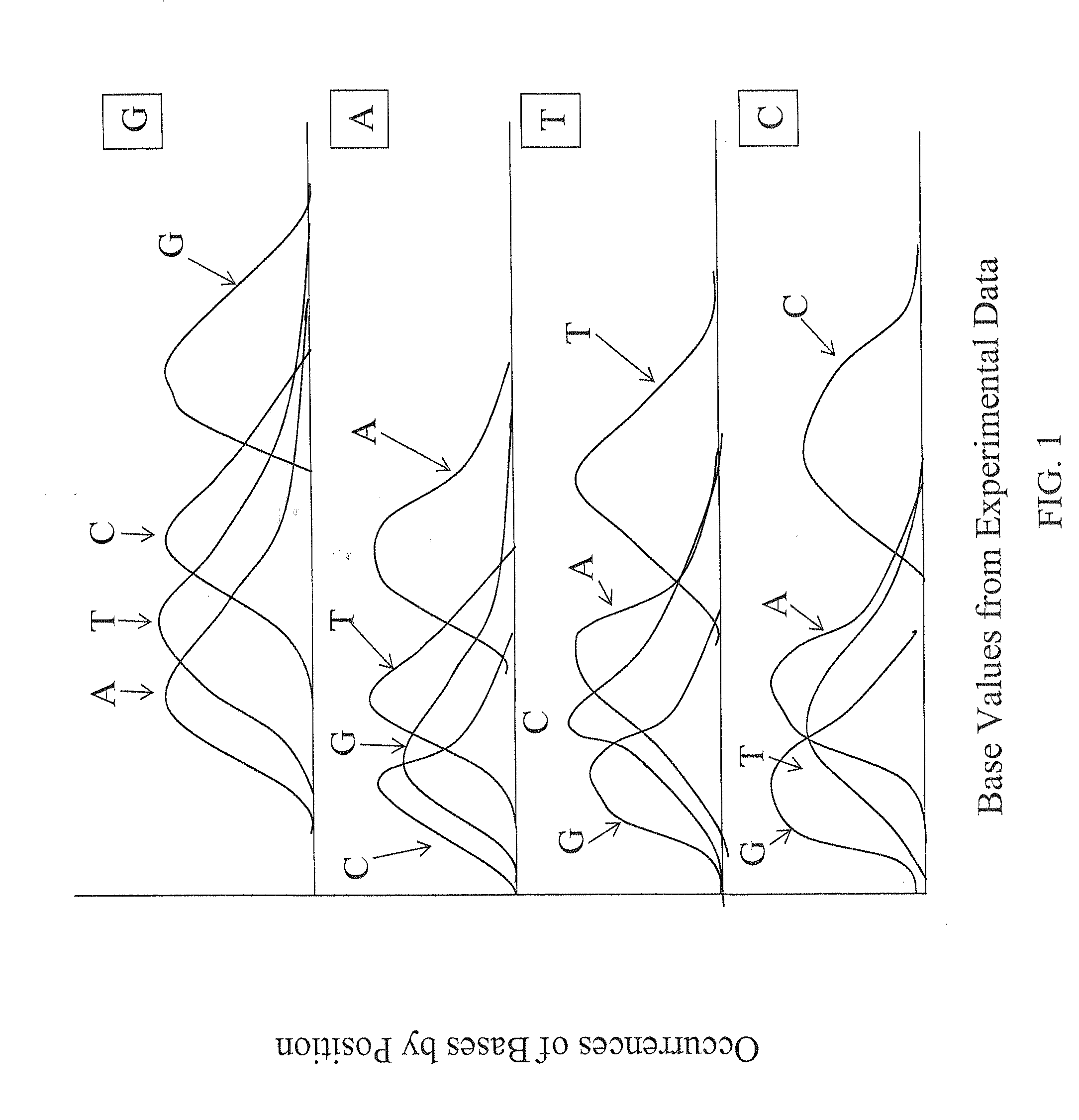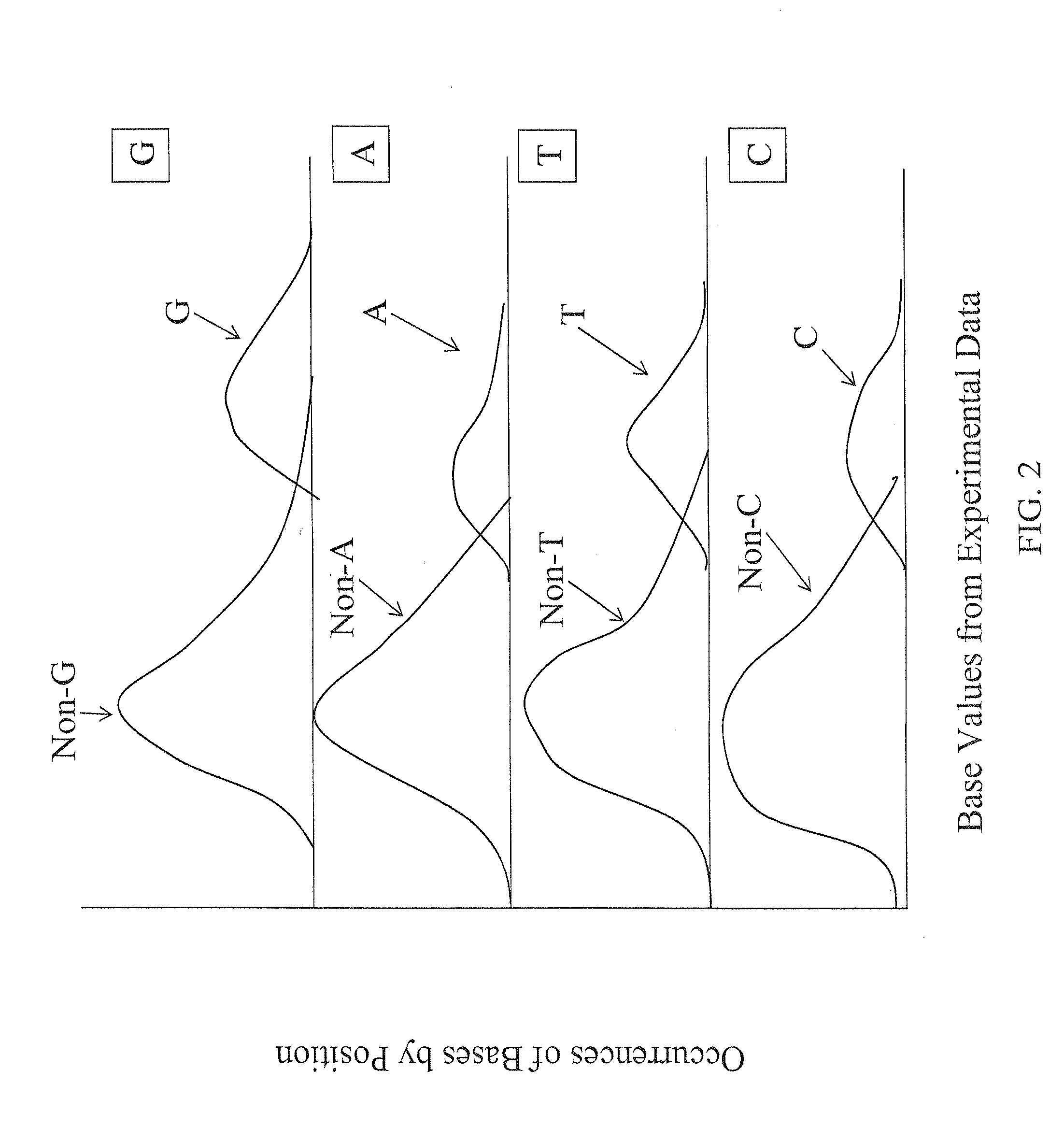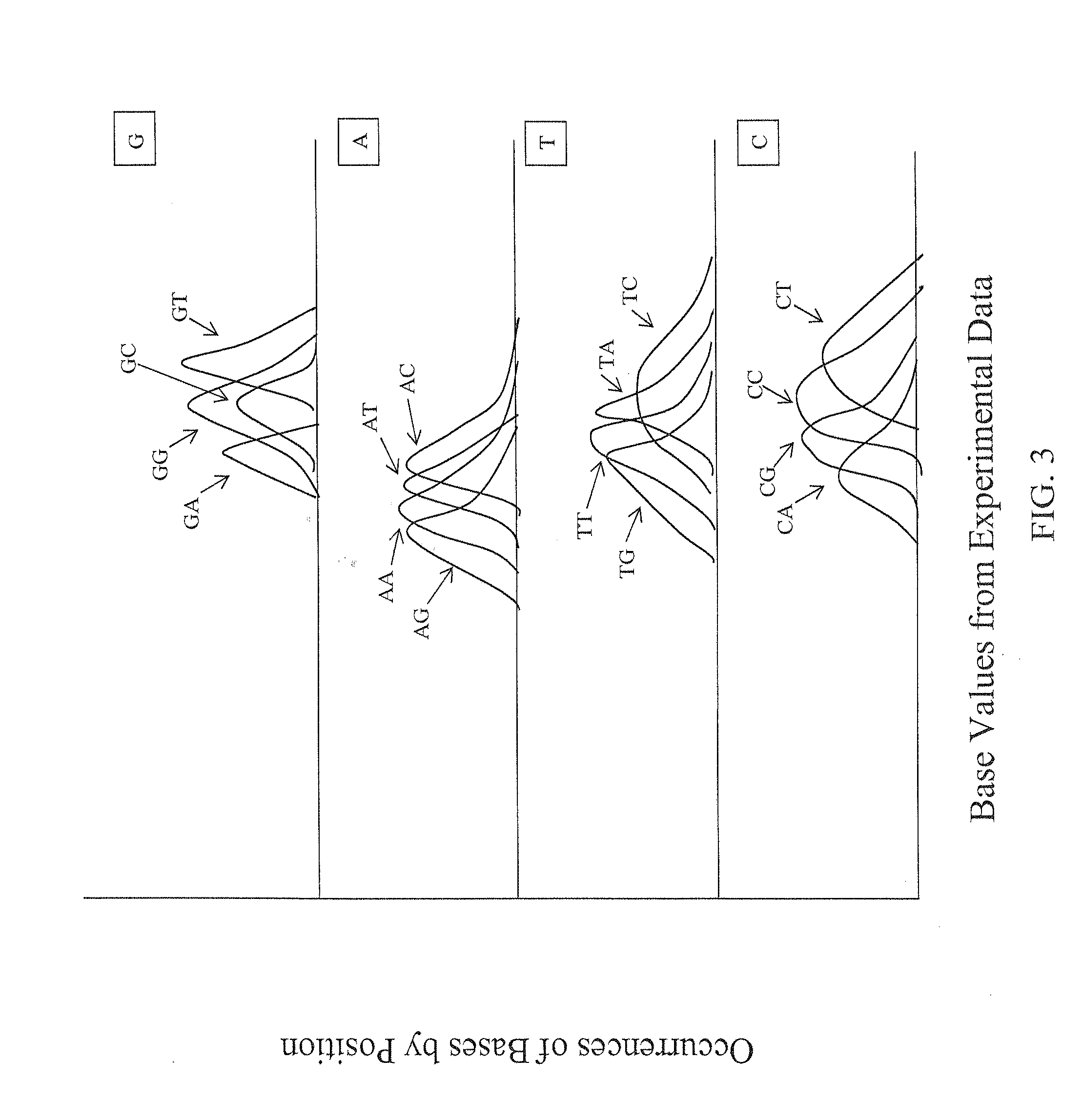Methods of nucleic acid identification in large-scale sequencing
a nucleic acid identification and large-scale sequencing technology, applied in the field of biological sequence evaluation and comparison, can solve the problems of generating the first complete human genome, prone to error, and prone to data used in such programs, and achieves accurate determination of error rates, accurate determination of base calls, and improved accuracy of base calling.
- Summary
- Abstract
- Description
- Claims
- Application Information
AI Technical Summary
Benefits of technology
Problems solved by technology
Method used
Image
Examples
Embodiment Construction
[0045]The description of the following aspects of the various embodiments of the invention primarily relate to identification of a single base in a target nucleic acid at a specific position. The invention also related to identification of two or more bases experimentally, depending upon the experimental approach of the identification of the experimental base values provided for use in the present invention.
THE INVENTION IN GENERAL
[0046]The ability to achieve high accuracy in the calling of assembled bases to identify the sequence of a target nucleic acid requires accurate assessment of the confidence or calling of individual raw base calls. This is especially important for assembly of experimental data resulting from high-throughput screening approaches, where the sheer volume of the data and experimental variability can increase the likelihood of sequencing errors or background noise, and the assembly of sequence of long stretches of nucleic acids requires the identification of sp...
PUM
| Property | Measurement | Unit |
|---|---|---|
| temperatures | aaaaa | aaaaa |
| temperatures | aaaaa | aaaaa |
| temperatures | aaaaa | aaaaa |
Abstract
Description
Claims
Application Information
 Login to View More
Login to View More - R&D
- Intellectual Property
- Life Sciences
- Materials
- Tech Scout
- Unparalleled Data Quality
- Higher Quality Content
- 60% Fewer Hallucinations
Browse by: Latest US Patents, China's latest patents, Technical Efficacy Thesaurus, Application Domain, Technology Topic, Popular Technical Reports.
© 2025 PatSnap. All rights reserved.Legal|Privacy policy|Modern Slavery Act Transparency Statement|Sitemap|About US| Contact US: help@patsnap.com



